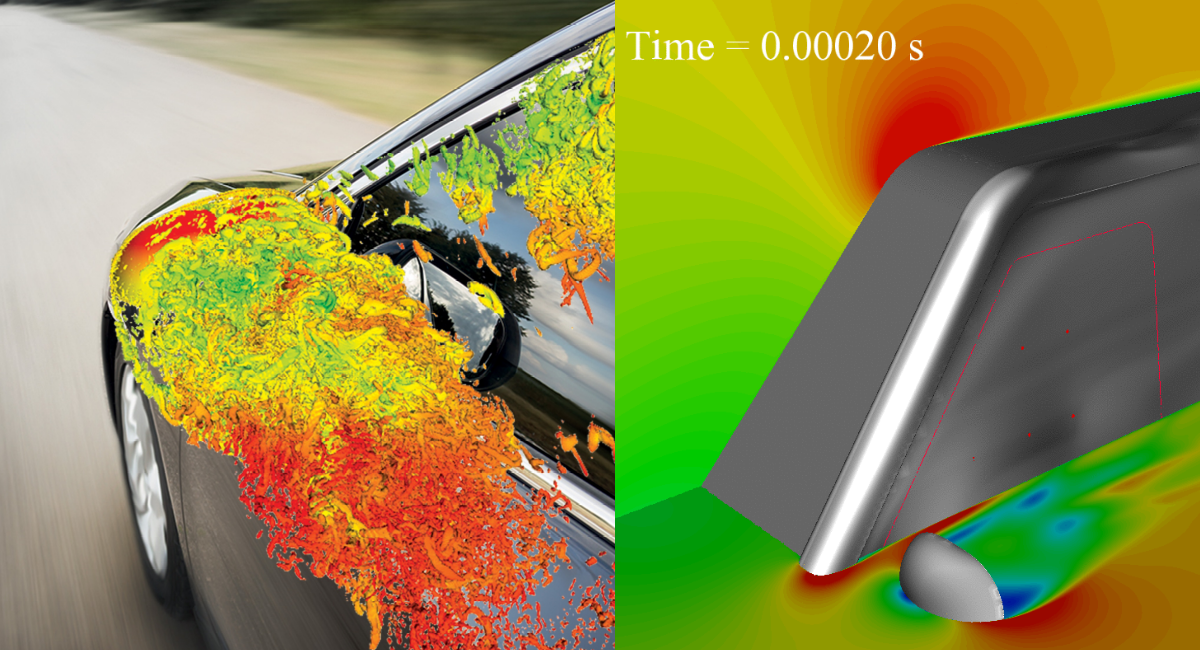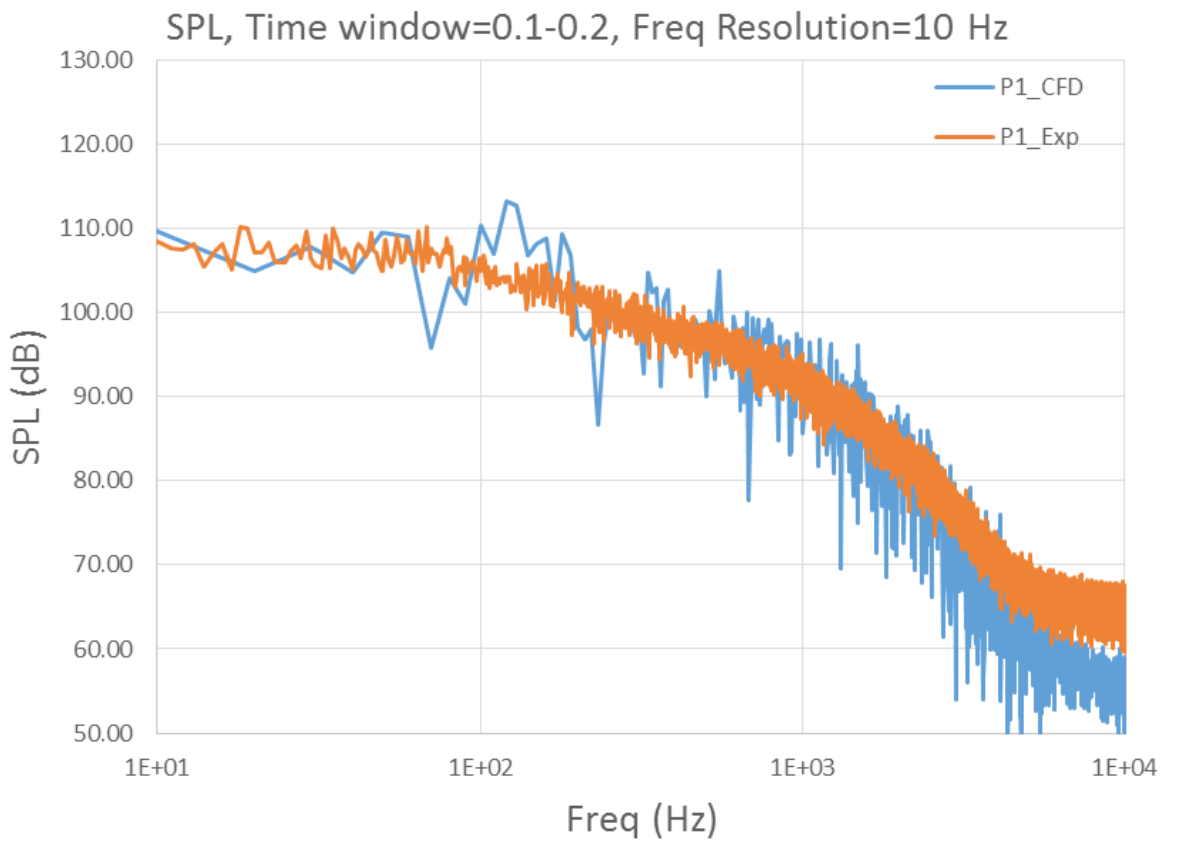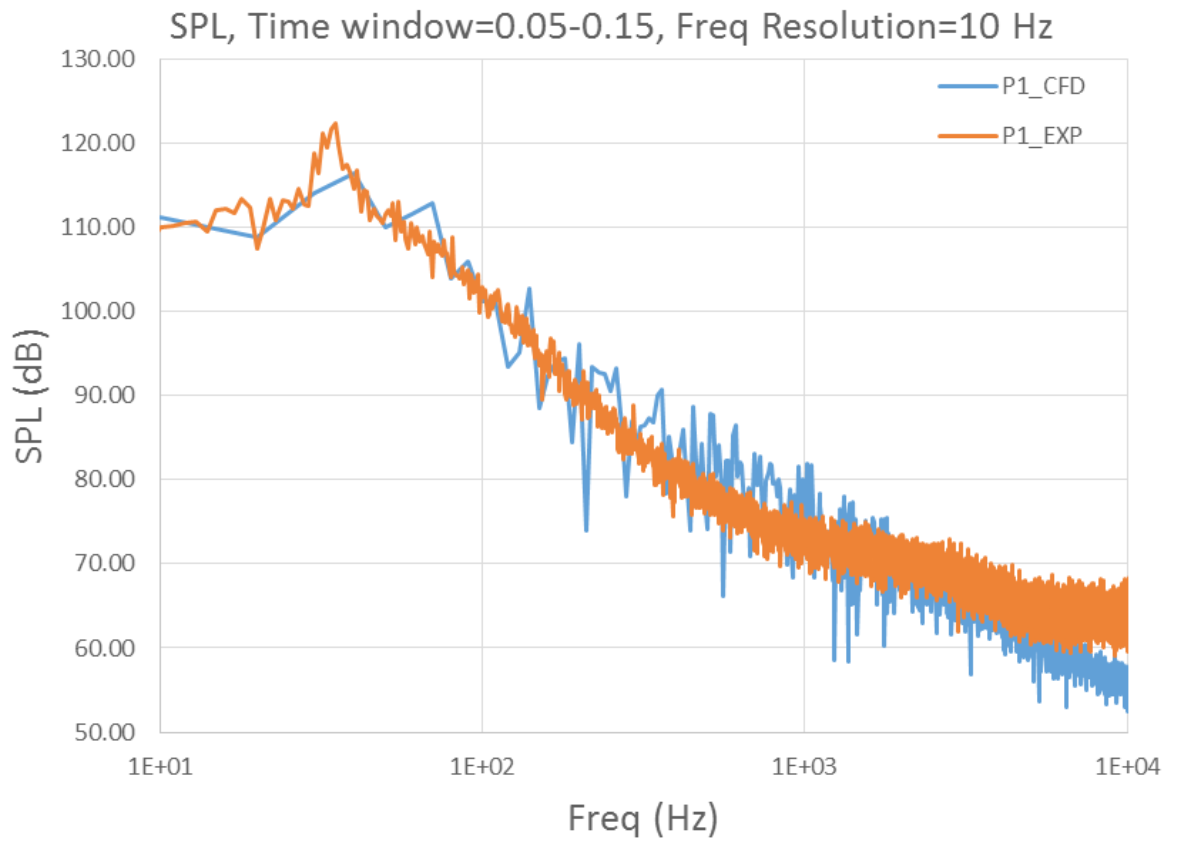Aeroacoustics
OpenFOAM® transient and compressible solvers directly capture turbulence pressure fluctuations (broadband), coherent shedding (tonal) and pressure-wave propagation in the fluid medium.
Noise transmission methods through simple structures, analysis via acoustics analogies and Adjoint Optimisation objective function are included in the solver-suite, complimented by validated processes for aero-vibro-acoustics (AVA) Fourier-based Wavenumber-Frequency decomposition analysis [1] and coupling with full-physics vibroacoustics solvers [2, 3].
Appling OpenFOAM to
- Internal cabin noise transmission from external wind noise
- Side-window and sunroof buffeting including interior cabin damping
- HVAC duct noise
- Underhood and HVAC fan cooling
- Frequency range up to the normal human peak range (~5kHz)
- Electric Vehicles in production
Using OpenFOAM features
- Compressible LES enabled turbulence
- Acoustic analogies
- Vibroacoustic transmission
- Adjoint Optimisation steady-state objective function
- Fourier/spectral analysis
Events
- Aeroacoustics Training schedule
References
[1] Hartmann M. , Ocker J. , Lemke T. , Mutzke A. , Schwarz V. , Tokuno H., Toppinga R., Unterlechner P., Wickern G. (2012). Wind Noise caused by the A-pillar and the Side Mirror flow of a Generic Vehicle Model. AIAA 2012-2205. https://doi.org/10.2514/6.2012-2205
[2] Blanchet D., Golota A. Validation of a wind noise source characterization method for vehicle interior noise prediction. (2014). http://doi.org/10.4271/2014-01-2052
[3] Zerbib N., Mebarek L., Heather A., Mas D. Use of OpenFOAM coupled with a Hybridization of Finite Element-Boundary Element Methods using an Adaptive Absorbing Boundary Condition for Wind Noise Simulation. (2107). https://doi.org/10.2514/6.2017-3508




